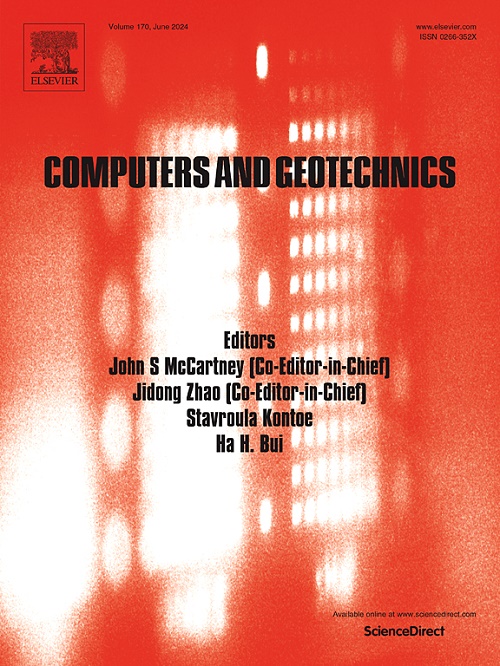Physics-informed deep learning and analytical patterns for predicting deformations of existing tunnels induced by new tunnelling
IF 6.2
1区 工程技术
Q1 COMPUTER SCIENCE, INTERDISCIPLINARY APPLICATIONS
引用次数: 0
Abstract
Investigating the response of soil and existing tunnels to new undercrossing tunnelling is important for ensuring the serviceability of existing structures. Existing methods, such as analytical models or data-driven approaches, struggle to accurately simulate tunnel mechanisms and predict soil deformations. Integrating these two methods provides a promising solution for practical applications. This study proposes an analytical-physics-informed neural network (API-NN) enhanced with transfer learning and uncertainty quantification for a real-time prediction of existing tunnel deformations induced by new tunnelling. The proposed approach leverages analytical patterns by exploiting physical perspectives into data-driven networks and merging them with transfer learning to solve the forward and inverse problems of soil-tunnel interactions, particularly with sparse datasets. Two scenarios, a practical project in Xiamen City and a 3D finite element method, were applied to validate the proposed approach. Results revealed that the API-NN approach successfully incorporates both physical patterns and data-driven networks, achieving real-time forecasting of existing tunnel deformation. The proposed approach maintains its computational precision even when dealing with noisy data. Compared to the existing physics-informed method, the proposed approach realized a 13.9% reduction in mean absolute error, demonstrating higher forecasting precision that is essential for tunnel applications.
基于物理的深度学习和分析模式,用于预测新隧道开挖引起的现有隧道变形
研究土壤和既有隧道对新下穿隧道的响应对保证既有结构的使用性能具有重要意义。现有的方法,如分析模型或数据驱动的方法,难以准确地模拟隧道机制和预测土壤变形。将这两种方法结合起来,为实际应用提供了一种很有前途的解决方案。本研究提出了一种基于分析物理的神经网络(API-NN),增强了迁移学习和不确定性量化,用于实时预测新隧道开挖引起的现有隧道变形。提出的方法利用分析模式,利用物理视角进入数据驱动的网络,并将其与迁移学习相结合,以解决土-隧道相互作用的正向和反向问题,特别是在稀疏数据集上。以厦门某实际工程为例,采用三维有限元法对该方法进行了验证。结果表明,API-NN方法成功地结合了物理模式和数据驱动网络,实现了对现有隧道变形的实时预测。该方法即使在处理噪声数据时也能保持计算精度。与现有的物理信息方法相比,该方法的平均绝对误差降低了13.9%,表明了更高的预测精度,这对隧道应用至关重要。
本文章由计算机程序翻译,如有差异,请以英文原文为准。
求助全文
约1分钟内获得全文
求助全文
来源期刊

Computers and Geotechnics
地学-地球科学综合
CiteScore
9.10
自引率
15.10%
发文量
438
审稿时长
45 days
期刊介绍:
The use of computers is firmly established in geotechnical engineering and continues to grow rapidly in both engineering practice and academe. The development of advanced numerical techniques and constitutive modeling, in conjunction with rapid developments in computer hardware, enables problems to be tackled that were unthinkable even a few years ago. Computers and Geotechnics provides an up-to-date reference for engineers and researchers engaged in computer aided analysis and research in geotechnical engineering. The journal is intended for an expeditious dissemination of advanced computer applications across a broad range of geotechnical topics. Contributions on advances in numerical algorithms, computer implementation of new constitutive models and probabilistic methods are especially encouraged.
 求助内容:
求助内容: 应助结果提醒方式:
应助结果提醒方式:


